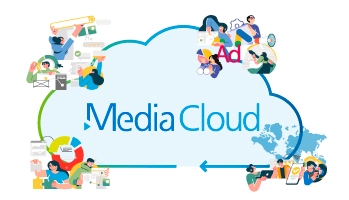
Why a unified CMS is the media strategy for 2022
An important aspect of the best content management systems (CMS) that does not always have the credit it deserves is usability and consistency in the use of the content manager in its entirety compared to CMS with fragmented experiences, where certain parts have their own designs, structure and navigation.
Fragmented experiences in open source CMS
This happens, for example, in open source CMS because sometimes it is necessary to extend the CMS core with various extensions or plugins. These extensions, made by third parties, may have their own entity and design that are very different from the usability and way the core CMS is handled.
In general, the core of the leading open source managers is usually excellent in terms of usability, since the community places a lot of emphasis on it. But this isn’t the case for the additions that we may need.
Furthermore, there are the risks of installing extensions that are essential for the project, but may later fall into oblivion by their creators, generate major security problems and dependencies that prevent updating the project´s core. This means that the CMS can no longer make updates and is automatically out of date and insecure.
Fragmented experiences in private CMS
For commercial CMS, not open to community collaboration, usability is largely broken due to developments made with a lack of resources and too much haste resulting in, for example, the sub-optimal integration of a third-party service, in the fastest and cheapest way possible.
We have already commented how in general CMS have a fairly uniform user experience at their core, but sometimes in the case of commercial CMS it is not very clear what should be part of the core and what not.
For example, sending newsletters via email in some CMS is part of the core, while others solve it with a quick integration of a third-party service. In the latter case, usability may suffer.

Unified usability in Iter WCM from Protecmedia
This is not the case with Iter WCM, since all its features, from key features to ones less used, have their own, optimized, common and unified usability, so that any feature is always familiar to the journalist or editor. That is, once used to the general usability, it does not change and, therefore, no additional efforts are required.
This is possible in Protecmedia due to our philosophy, in which all clients move forward together and all receive the same updates, so that no one is left behind, and everybody can count on a unified and usable experience throughout the CMS.
Protecmedia's Iter WCM has a single development team that controls the entire CMS and, in which everything is part of the core and is perfectly integrated. Third-party feature integrations are therefore transparent to the person running the CMS, who doesn't notice a jump in usability.
Other benefits
Having everything centralized and perfectly integrated also opens up new possibilities. For example, having your own statistics provided by the CMS itself instead of directly from an external provider allows for combining this data with other CMS events automatically. In this case, if the editor, for example, makes a change to the article, the system generates an automatic annotation in the article's access and read statistics, allowing the editor to evaluate whether the change made was positive or negative.
The same happens, to give another example, with the paywall. If instead of integrating a third-party solution it already exists in the CMS and is well integrated, it provides valuable data that can be combined with other data provided by the CMS to be able to make the best decisions and personalize offers to users.




